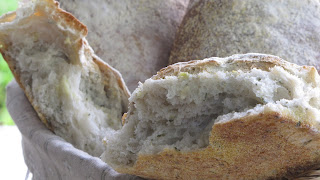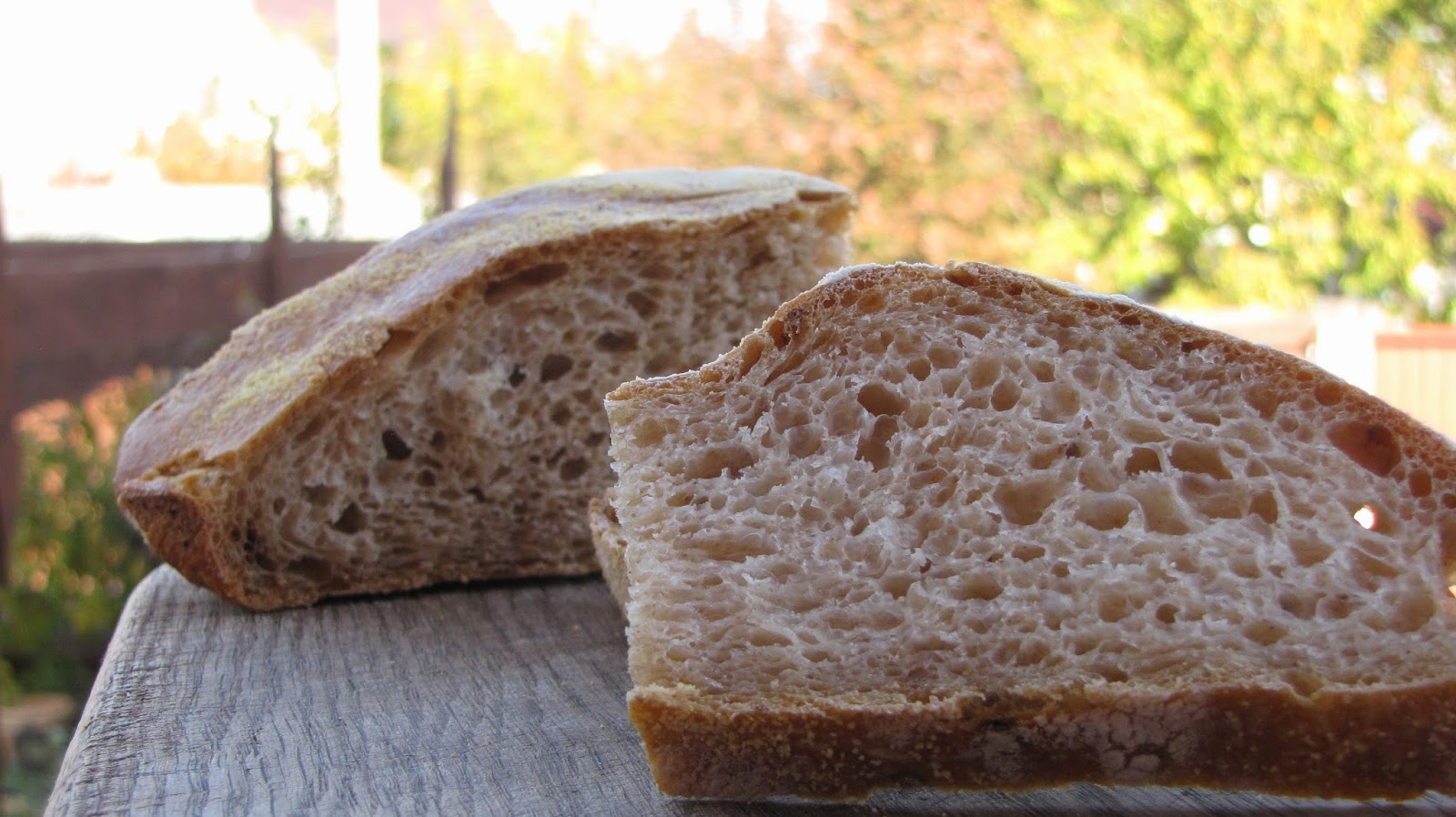 |
| Caerfai Farm Cheddar and Caerphilly |
Historically, cheese making dates back at least 5000 years. No one can be sure exactly how it came into being but most theories suggest that it began with our discovery that animals could be milked. Who that person was and what they thought they were doing at the time is still a mystery.
Once obtained, the milk had to be stored. A common receptacle would have been the stomach of a ruminant which could then be carried on horseback. Unknown to these early nomads, ruminants' stomachs contain an enzyme we know today as rennet which coagulates milk making it easier for the baby animal to digest. The rocking motion of the horse churned the milk combined with rennet resulting in a separation of thick curds and watery whey. The whey made a refreshing drink and the curds provided an easily consumed high protein meal.
This simple process is still used today, if you heat milk and add an accidulant such as lemon juice the curds will separate and you can press them to make fresh cheese. Herbs or sweeteners can be added, or it can be formed to make cheeses such as paneer.
In the middle East, salt was added to help preserve the cheese resulting a somewhat hard and rather tasteless base product. However, in Europe the natural bacteria in the atmosphere and less need for salt due to the cooler temperatures meant the cheese could be matured for longer resulting in a deeper and more pronounced flavour. The bacteria unique to the area would provide a regional cheese.
And this process has remained very similar amongst artisan cheese makers to this day. One such producer worthy of note is the Caerfai Farm in St David's, Wales.
Located just metres from the Pembrokeshire coastline, Linda Evans has been producing three types of quality artisan cheese on their 180 acre organic dairy farm since 2004 when she took over from her father who had first produced cheese in 1996.
To hear Linda talk about how she produces cheese you wonder why everyone isn't doing it, she makes it sound deceptively simple.
Their organic raw (unpasteurised) milk is warmed and a vegetarian rennet added to start the coagulation. At this point a starter culture is also added. This is to replace the bacteria which would have originally been in the atmosphere and provide the flavour or character of the cheese. These are easily bought nowadays and are usually under the generic label of 'type'; 'cheddar' type or 'brie type', for example.
She then separates the curds from the whey and grinds the curds into a finer mix which is known as 'cheddaring'. The curds are then placed into a mould and left to set before being turned out and wrapped in a muslin cheese cloth. An interesting note here is that Linda used to employ a traditional method of sealing the cheese with lard instead of cheesecloth. However, this created such an effective air tight seal that a blue-ish vein developed which people then associated with other types of cheese and not cheddar.
 |
| Caerfai Cheddar maturing |
For the Caerphilly the process is similar only a different starter culture is used, the cheese is brined for 24 hours after being unmoulded and it matures for a maximum of six weeks, Linda recommends an optimum time of three weeks for the best flavour.
 |
| Caerfai Caerphilly |
There are a few points to note about Linda and Caerfai which are a sign of the real artisan and should be a benchmark for all our food producers.
Firstly, Linda was very generous with her time and showed me around the whole dairy talking me through the process of how she produces her cheese. The ability to meet the people who produce our food is something which is becoming increasingly rare leading to a lack of knowledge about what we eat and drink.
Secondly, the quality of their cheese comes before a desire to make a huge profit. There are only 60 cows on Caerfai farm, not many for 180 acres. However, they want to keep the best possible environment for their cows giving them enough space to live a natural life. Happy cows produce better milk which produces better cheese.
Finally, they know what they are talking about. As we increasingly outsource the production of what we eat to huge multinational companies we are left with very few who really understand the history or what it takes to make that product from beginning to end, people who understand the importance in the quality of every ingredient and step in the production. Linda and Caerfai represent all that is good about food production and what we need to maintain our glorious food culture.
And what a cheese they make. Their cheddar is absolutely to die for, a depth of flavour which is striking and a gorgeous back note with a nutty finish. The Caerphilly is a softer cheese on the palate due to it maturing for a maximum of six weeks as opposed to the seven to eight months for the cheddar.
If you are in Wales look out for Caerfai Farm cheeses and support a real artisan producer of really good quality food.
www.caerfaifarm.co.uk





















.jpg)
















